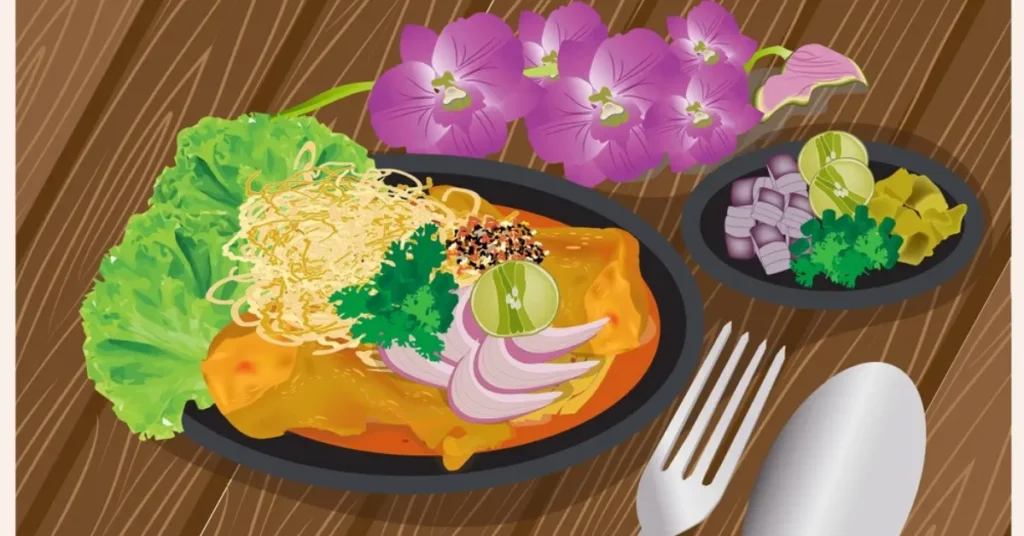Have you ever wanted to include more veggies in your everyday meals without adhering to your same old salad routine? Behold the spiralizer, a culinary wizard that turns vegetables into delectable noodles. If you’ve been trapped spiralizing zucchini and carrots, it’s time to break free and introduce a variety of flavors to your meal. Let’s look at seven fruits and vegetables that are set to transform your noodle game!
1.Butternut Squash: A Golden Twist to Your Plate
Say welcome to butternut squash, which is the golden marvel of autumn. In addition to its sweet taste, this vegetable is high in fiber & vitamins A and C. A cup of uncooked, spiralized butternut squash has 83% of your daily Vitamin A requirements and 33% of your Vitamin C requirements.
The National Institutes of function (NIH) states that vitamin A promotes eyesight and immunological function. Meanwhile, vitamin C strengthens your immune system and scavenges free radicals, according to study.
The squash called butternut is simpler to spiralize than you would think. Simple to spiralize: peel, slice, then saute or smoke for a delightful, somewhat sweet spaghetti substitute.
2.Beets: Vibrant Noodles Packed with Antioxidants
Though beets may stain your palms, the advantages they provide are worthwhile. Beets are high in antioxidants and fiber known as betalains, which may reduce the possibility of heart disease and dementia.
According to Dr. Palmer, beets and other organic foods consist of vitamins and minerals including folate and potassium. AS per National Institutes of Health (NIH) potassium is required for normal kidney and heart function, contractions of muscles, and nerve impulse transmission. In accordance to the USDA, a single beetroot has 266 milligrams of this mineral.
The noodles can be eaten raw, cooked quickly (2-3 mins), baked at 425°F for 5-10 minutes, or sautéed for 5-7 minutes. To make a delicious and nutritious salad, mix uncooked beetroot spaghetti, greens, dairy products, and walnuts. Just Spin, boil over, roast, or sauté beets to create vivid noodles that will add color and nutrients to your dishes.
3. Turnips: From Bitter to Better in a Spiralized Twist
Do not be intimidated by turnips’ bitterness. Once spiralized, the root vegetables loosen and absorb flavors well. Turnips are high in cellulose, vitamin C, iron, and the mineral potassium, which makes them complement to salads, soups, and sides.
When spiralizing the turnip, cut off both ends and peel it well. The turnip noodle can be prepared in 2-3 minutes, sautéed in five to seven mins, or cooked at 425 degrees F for 10-12 minutes. Just boil, cook, or roast your vegetables to add a flavorful twist to your usual menu.
4. Jicama: The Versatile Wonder
Jicama, which is often neglected, becomes a diverse joy when spiralized. It is high in the fiber, folic acid, folate, and potassium, making it a nutritious complement to your meals. Simply peel jicama with a peeler or your fingers and feed it into the spiralizer (if it’s too big, chop it in half). Jicama noodle can be eaten uncooked, baked at 400°F over ten to twenty minutes, or sauté for around 5 minutes.
Jicama may be spiralized, seasoned, and cooked in a variety of ways, including shoestring fries and a no-cook noodles salad.
5. Broccoli Stalks: Unleash the Nutrient Power
Yes, you read it correctly; broccoli stems can be spiralized! While it may not produce perfect spirals, the nutritional advantages are worth the effort. Maffucci recommends sautéing the noodles with other vegetables if they aren’t visually appealing. In reality, including the florets, which contain the majority of the nutrients in broccoli, is a good decision.
Spiralized broccoli stalks are high in fiber and vitamin K, making them a novel addition to your vegetable noodles repertoire. Choose broad stems, cut, and saute with other vegetables for a nutrient-dense lunch.
6. Bell peppers are colorful, crunchy, and vitamin-rich.
Spiralized bell peppers provide a pop of flavor and vibrant color to any dish. These low-calorie pleasures, which are full of vitamins and fiber, are an excellent complement to stir-fries and salad. These Pepper-based noodles are an excellent complement to stir-fries and salads, and spiralizing them is more easier than you may think.
Simply chop off the upper part of the peppers and lay it on your spiralizer, stem side pointing away from the blades. The seeded interior will become messy, but you can just toss it out or add the seeds to a salad for an extra dose of protein and fiber, according to study.
Spiralize them quickly and combine with other vegetables for a delicious winter salads or a colourful stir-fry.
7. Apples and Pears: Sweet Fruit Noodles for Dessert or Salad
Who said spiralizing was just for vegetables? Fruits such as apples or pears, when turned into pasta, make a delicious, fiber-rich dessert or salad garnish. They are high in fibre yet low in calories, adding crunch while also providing several health advantages. No need to peel; simply spiralize and add to one of your preferred salads for the right touch of sweetness.
Conclusion: Embrace the Noodle Revolution!
Besides zucchini, there’s a whole world of spiralizing to discover. From bell peppers to the fruits: apples, the broccoli-stems, jicama, pears Butternut, to beet and yams, all contribute unique flavours and nutritional value to your cuisine.So bring out your spiralizer, get innovative in the house, & let the noodles revolution begin!
